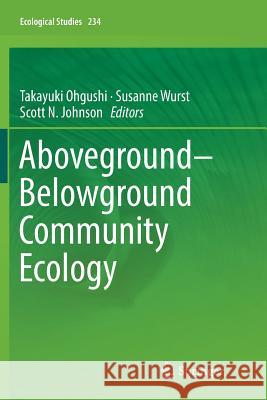Aboveground-Belowground Community Ecology » książka
topmenu
Aboveground-Belowground Community Ecology
ISBN-13: 9783030062668 / Angielski / Miękka / 2019 / 370 str.
Kategorie:
Kategorie BISAC:
Wydawca:
Springer
Seria wydawnicza:
Język:
Angielski
ISBN-13:
9783030062668
Rok wydania:
2019
Dostępne języki:
Numer serii:
000007171
Ilość stron:
370
Waga:
0.53 kg
Wymiary:
23.39 x 15.6 x 1.98
Oprawa:
Miękka
Dodatkowe informacje:
Wydanie ilustrowane











